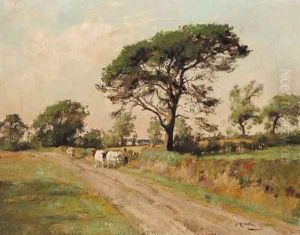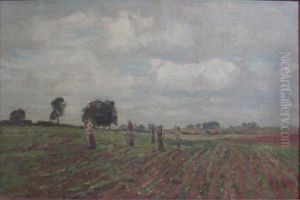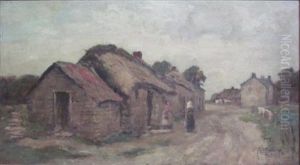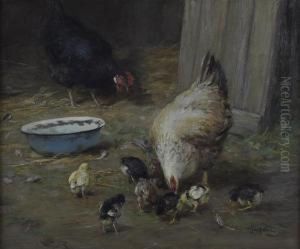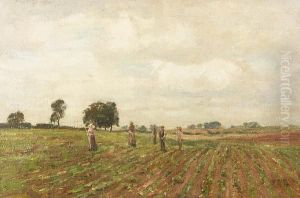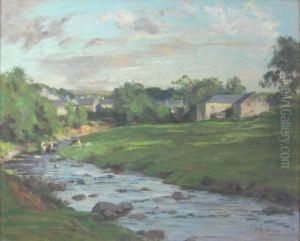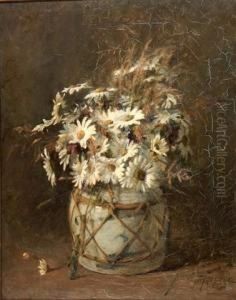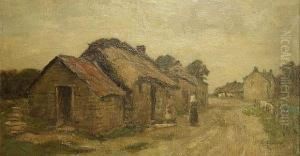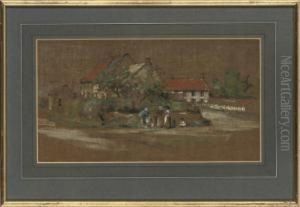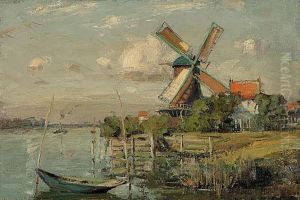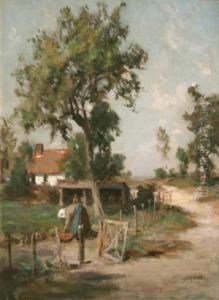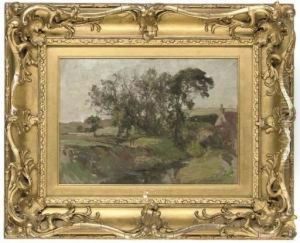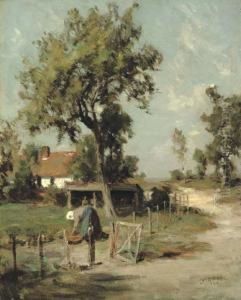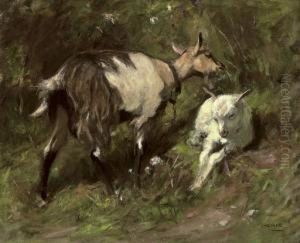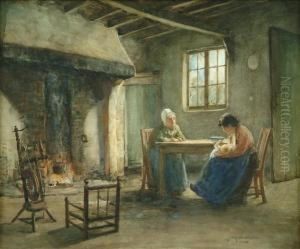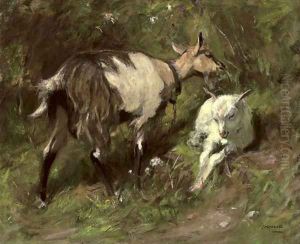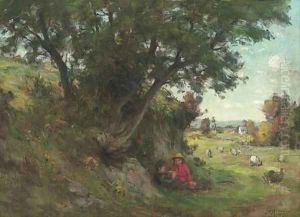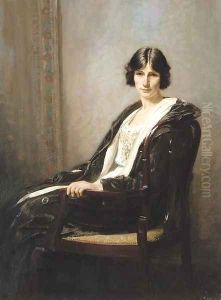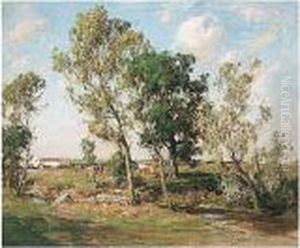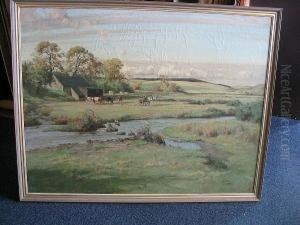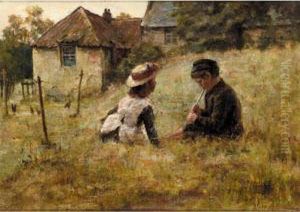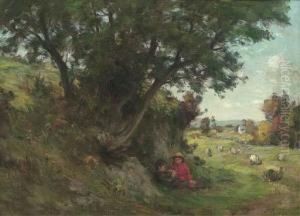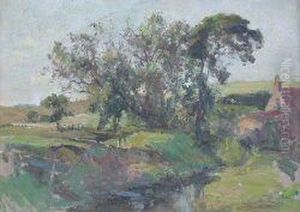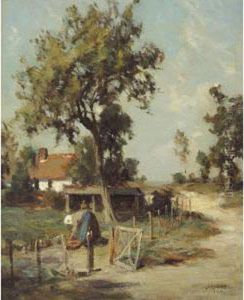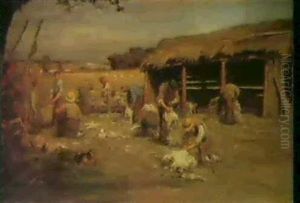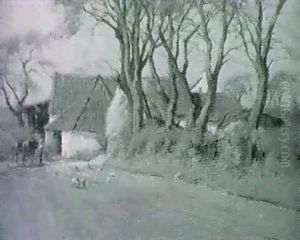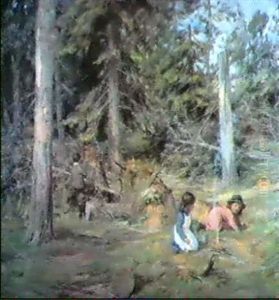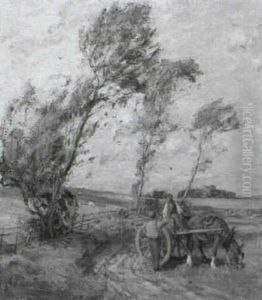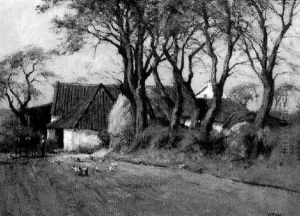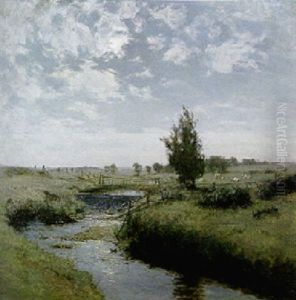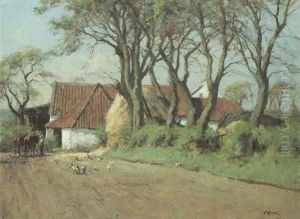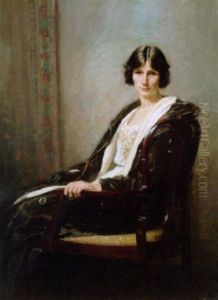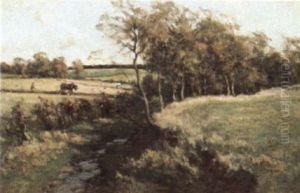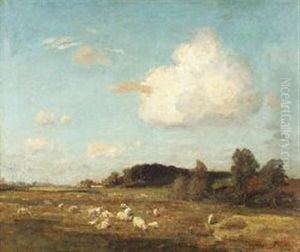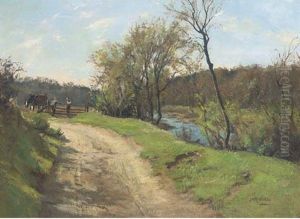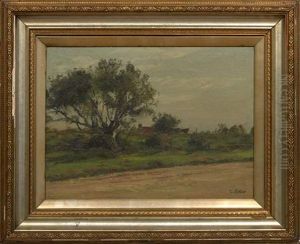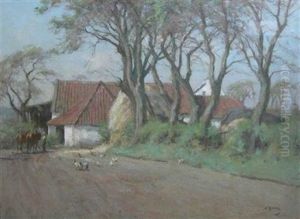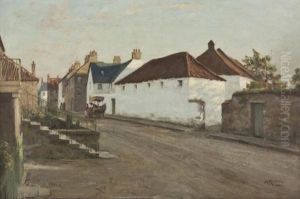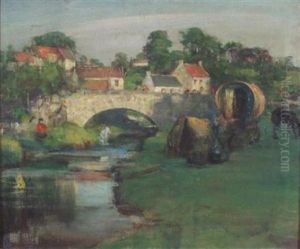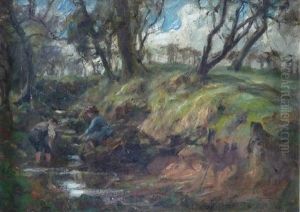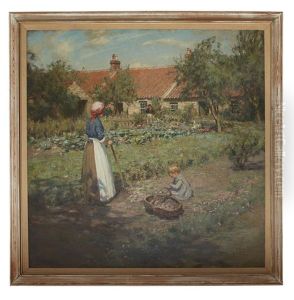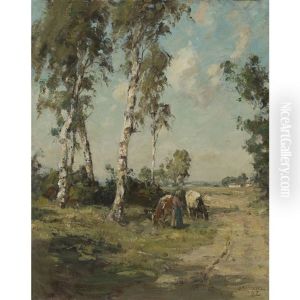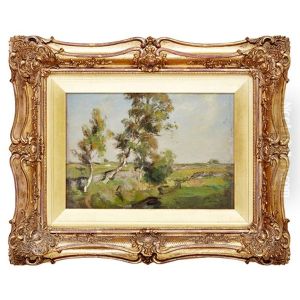James Riddel Paintings
James Riddel, not to be confused with any contemporary artists sharing a similar name, was a Scottish watercolour painter born in 1857. His work primarily consisted of landscapes, which he rendered with a deft touch and a keen eye for the subtleties of light and color. Riddel was part of a tradition of Scottish watercolor painting that was particularly appreciated during the late 19th and early 20th centuries.
Riddel's life was characterized by his dedication to his craft. He studied art seriously, honing his skills in the portrayal of natural scenes. Scotland's rugged countryside, with its rolling hills, lochs, and coastal scenes, provided ample inspiration for his paintings. Riddel was adept at capturing the changing moods of these landscapes, often emphasizing the atmospheric effects of the Scottish weather. His paintings often featured a luminous quality, with a soft palette and a delicate handling of light and shade.
Throughout his career, Riddel exhibited his work widely. He participated in exhibitions at prestigious institutions, such as the Royal Scottish Academy and the Royal Glasgow Institute of the Fine Arts. His paintings were well-received, and he garnered a respectable following among art collectors and enthusiasts of Scottish art. Despite the popularity of his work during his lifetime, Riddel's name is not as widely recognized today as some of his contemporaries.
James Riddel's contribution to Scottish art is nonetheless significant. He left behind a body of work that continues to be appreciated for its technical skill and its evocative portrayal of Scotland's natural beauty. Riddel passed away in 1927, leaving a legacy as a master of Scottish watercolor landscape painting. His works can still be found in private collections and occasionally appear at auction, where they are valued for their historical and artistic merits.
